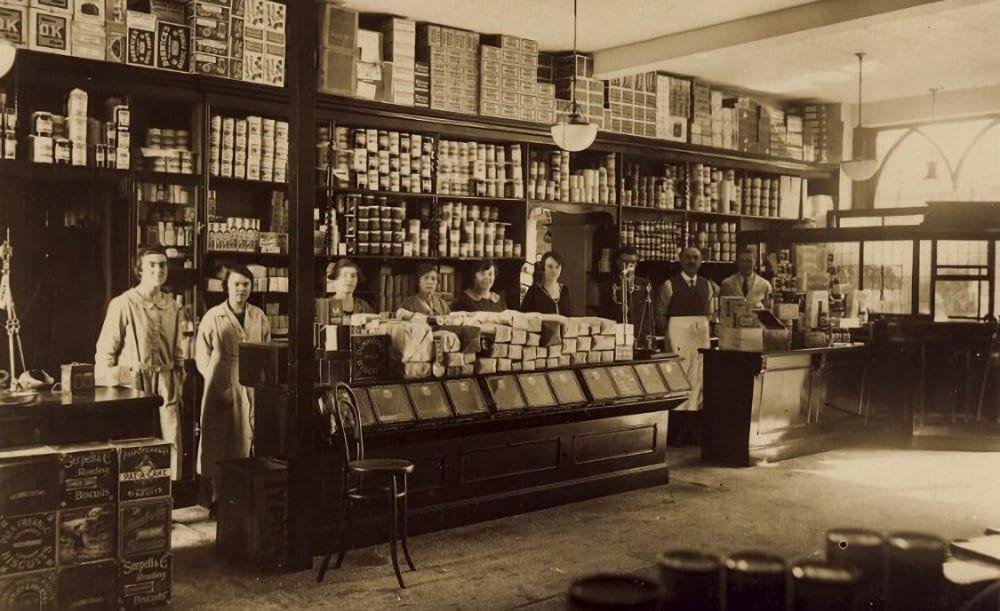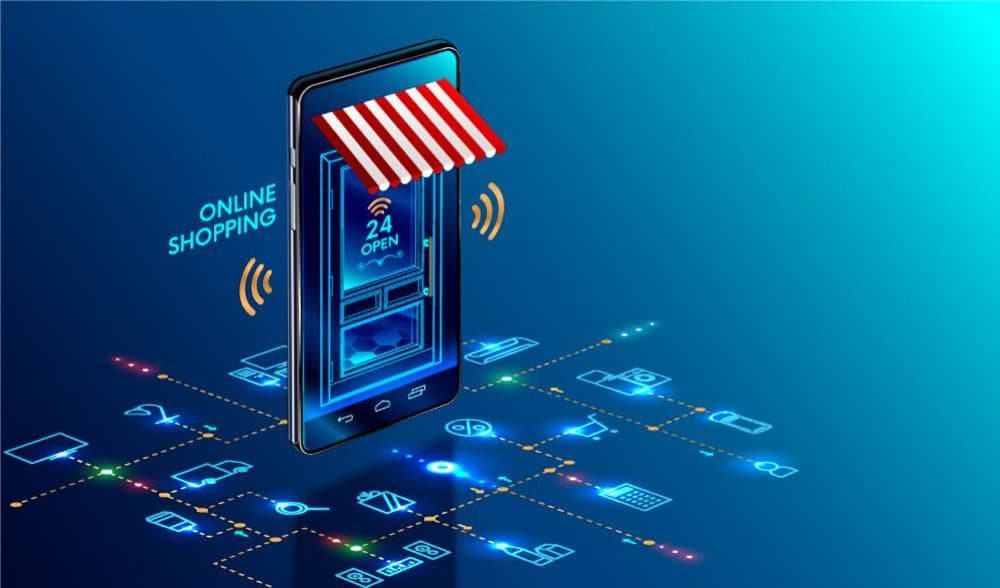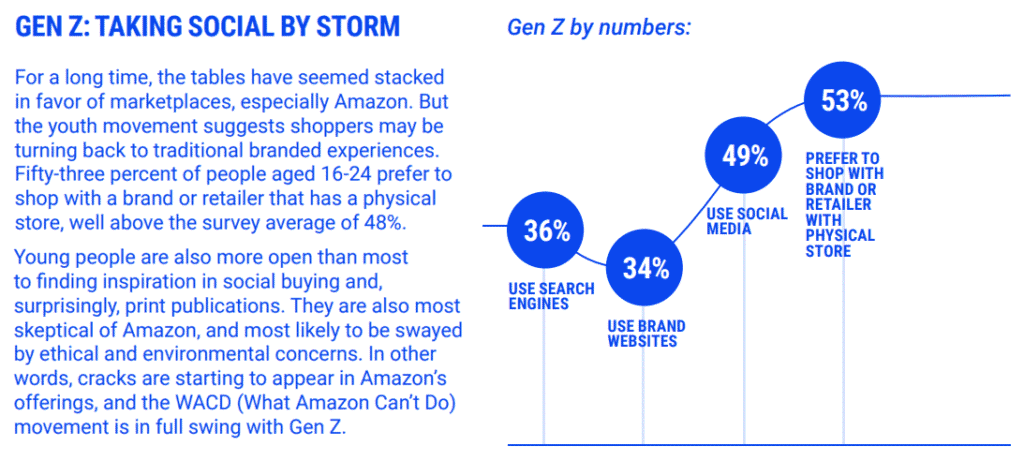Retail’s Glory Days:
Customer Trust at its Best
Most people likely remember hearing their parents or grandparents fondly reminisce about retail’s “glory days”. Stories of shopping at the general store or their favorite butcher. Memories of shopkeepers who knew your name, your birthday, and all your shopping preferences. I vaguely remember such shopping trips as a young child, but this is nothing but a fantasy to my own children. In retail’s “glory days” the scale of retail made it was possible to conduct business that way. And it was a great business model based on truth and satisfaction that built loyalty. Retail proprietors saw their customers frequently. They established personal relationships with them. They watched their kids grow up, knew the events going on in their lives, and treated each customer as a friend. Retailers back then provided more than just products for their customers, they added real value to their lives. These relationships were based on value and trust and were passed on for generations.

Retail Embraces Progress:
Customer Trust at Stake
While our grandparents clung to the glory days, our parents sought out progress. The population exploded after World War II and the American economy exploded with it. The fallout from that explosion was sprawling suburbs to house the Baby Boomers with an appetite for consumption. Shopping malls and big box stores sprang up en masse to feed the shopping hordes. By the 1970s, progress spawned television advertising, credit cards, and bar code scanning. This created an unprecedented boon for retailers, unlike anything the world had ever seen. Consumers became overwhelmed with options and convenience. Between 1975 and 1995, the retail industry experienced tremendous expansion. The “Mom and Pop” stores faded into history and were replaced with mass merchants, department stores, discount stores, convenience stores, category killers, warehouse clubs, and specialty chains. Progress had catapulted the shopping experience into the stratosphere. The cost: personalized customer experience, trust, satisfaction, and loyalty.

Retail Goes Digital:
Customer Trust Gap Widens
All things considered, as we neared the turn of the century, shopping still required engaging with people. Many a mother went to the grocery store just to get out of the house and interact with people. But progress reared its techno-tail yet again with the advent of the internet. By 2010 retail had gone digital and every major brand had a prominent internet presence. Fast forward to today and we see an unprecedented trend of shopping convenience. Practically anything your mind can desire is available online and delivered directly to your door in a few days or less. Including a car – and a house!. While that level of convenience is staggering, deep down, people are beginning to sense something is missing. Especially the younger generations.

Retail Goes Retro:
Customer Trust Resurgence
Despite being born into a digital world, the Millennial and Gen-Z generations aren’t digitally exclusive shoppers. They prefer buying “experiences” over products. They want retailers to know them personally and will gravitate toward those that do. They are also influencing the retail landscape by pushing brands to reflect their values such as truth, integrity, and altruism. This is especially true of the Gen-Z’s. A 2019 study by Wunderman Thompson entitled “The Future Shopper” found that fifty-three percent of people aged 16-24 prefer shopping with a brand that has a physical store. They’re also most skeptical of Amazon, and most likely to be swayed by ethical and environmental concerns. Given this, it’s no surprise that they’re leading the charge for retail personalization.
Retail Comes Full Circle
Customer Trust Imperative
Notwithstanding the desire to return to the “glory days” of retail, is it possible today to dial back the clock and reengage with customers like the “Mom and Pop” stores of old? In short, the answer is YES! The key driver of glory day retail was customer knowledge and customer trust. Those retailers knew their customers personally through intimate, sustained relationships. And the secret to all successful relationships, as any happily married man or woman knows, is trust and communication. As trust in a relationship grows, the depth and breadth of the personal information shared expands. The more retailers know about their customers, the better equipped they are to create value-add customer experiences and personalized promotions. Customers are ready to open that door, but the key to unlocking it is customer trust.

Retail Back To the Future:
Customer Trust Relationships at Scale
As we’ve seen above, establishing personal relationships with customers based on trust was essential back then, and it’s still essential today. Given the global reach and digital nature of shopping today, retailers will clearly need help (see blog CRM vs CDP and Why Retailer’s Need Both). But for the first time in modern history, technology is making personalized relationships with customers at scale a reality. Consumers are leaving a trail of invaluable personal information, “digital diamonds”, all over the internet floor (see blog: Retail’s Perfect Storm: Customer Hyper-Personalization). These diamonds contain qualitative and attitudinal data that reveals what motivates and inspires each customer. The retailers that know how to mine these diamonds and convert them into value-add trusted relationships will not only survive but thrive on the new customer super-buyway.
In Conclusion
Customer Trust in Action
This pool of valuable data will continue to grow as customers expand their digital reach. But it’s not just the customer that retailers must cater to when harnessing such data. We see a growing trend today with government regulators regarding customer consent and preference management. Huge fines can be imposed if customer data is utilized improperly or inadequately protected. Retailers will need help managing all of this as data privacy regulations can be a moving target and difficult to manage. SAP offers comprehensive Customer Identity and Access Management, and Enterprise Consent and Preference Management solutions which help retailers manage such complexities at scale. These solutions have numerous other benefits such as the ability to manage and streamline direct engagement with customers across a growing variety of digital touchpoints. They also help manage and enhance new customer onboarding that motivates customers to convert from faceless avatars to loyal customers. And they help protect customer’s private data from partner solution integrations as a retailer’s business grows.
Customer Trust is Worth the Challenge
Retail customers today are highly skeptical and for good reason. Spam mail, phishing schemes, and data breaches are all too common in everyday life. But at our core, we strive to trust, and all of us seek value in our lives. Our younger generations are challenging this industry to build a bridge of trust and add value to their lives and the world. It’s an admirable goal. And it’s possible for those retailers willing to embrace the challenge. Establishing customer trust is a journey, requiring both digital and cultural transformations. But in the end, there are three core requirements that customers need to establish customer trust:
- Transparency: customers need to know what data is being collected about them, how’s it’s being collected, and how it’s being used. These policies need to be readily accessible and easy to understand.
- Control: customers need complete control over their data including the ability to add, modify, and delete it at any time – and by deleting it they mean it’s physically gone, not just invisible in their profile. They also want confidence that the retailer will control this data by protecting it from data breaches, selling it without permission, or abusing it within the relationship; and,
- Value: customers must perceive that there is value for them in sharing their intimate information with the retailer. How does this action enrich their lives, add convenience, and strengthen the relationship?


